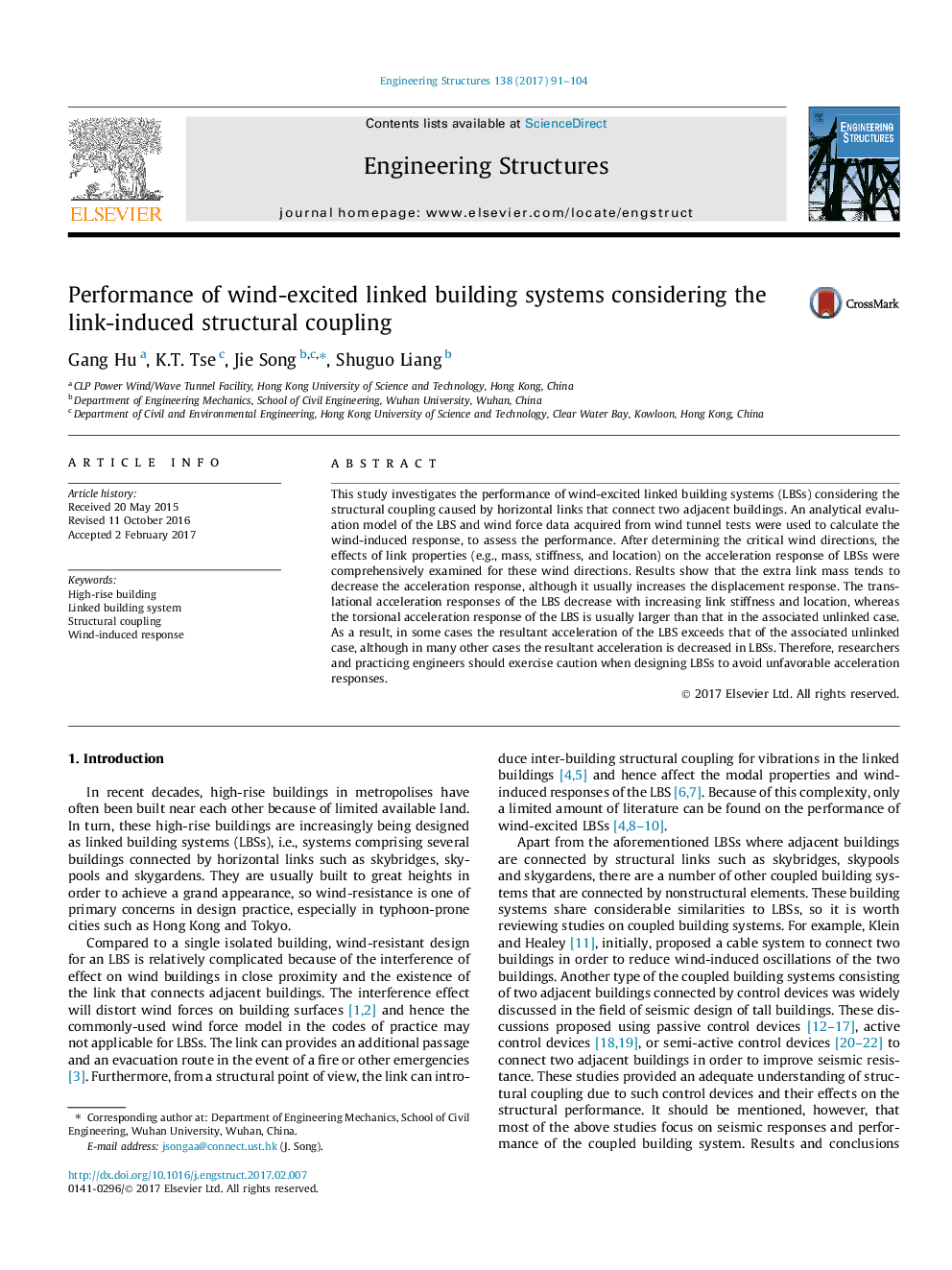| Article ID | Journal | Published Year | Pages | File Type |
|---|---|---|---|---|
| 4920317 | Engineering Structures | 2017 | 14 Pages |
Abstract
This study investigates the performance of wind-excited linked building systems (LBSs) considering the structural coupling caused by horizontal links that connect two adjacent buildings. An analytical evaluation model of the LBS and wind force data acquired from wind tunnel tests were used to calculate the wind-induced response, to assess the performance. After determining the critical wind directions, the effects of link properties (e.g., mass, stiffness, and location) on the acceleration response of LBSs were comprehensively examined for these wind directions. Results show that the extra link mass tends to decrease the acceleration response, although it usually increases the displacement response. The translational acceleration responses of the LBS decrease with increasing link stiffness and location, whereas the torsional acceleration response of the LBS is usually larger than that in the associated unlinked case. As a result, in some cases the resultant acceleration of the LBS exceeds that of the associated unlinked case, although in many other cases the resultant acceleration is decreased in LBSs. Therefore, researchers and practicing engineers should exercise caution when designing LBSs to avoid unfavorable acceleration responses.
Related Topics
Physical Sciences and Engineering
Earth and Planetary Sciences
Geotechnical Engineering and Engineering Geology
Authors
Gang Hu, K.T. Tse, Jie Song, Shuguo Liang,
